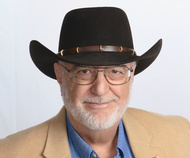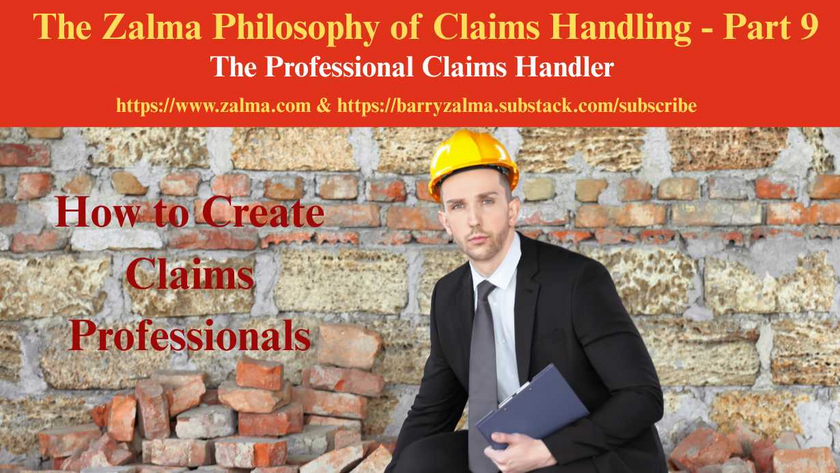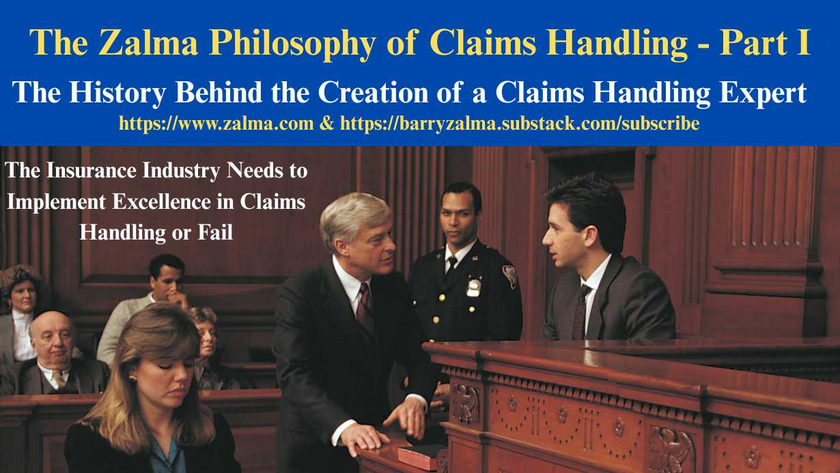
Gangs Took Over Fire Reconstruction Industry in New York
Barry Zalma
Feb 19, 2024
Transcript
This is Barry Zalma speaking for Claims School Incorporated's blog Zalma on Insurance.
Today we're going to talk about why a blog's gang member
was found guilty of violating RICO the Racketeer Influenced and Corrupt Organizations Act to defraud insurers after his gang took over the fire reconstruction industry in New York.
I have been told for the last 60 years that insurance fraud is not a violent crime.
This case from the city of New York proves that insurance fraud truly is a violent crime and the guilt of the defendant established that fraud is a violent crime especially when operated by a street gang.
Jatiek Smith, also known as Jack, a member of the Bloods gang, was charged with one count of racketeering conspiracy in violation of federal statutes and one count of extortion conspiracy in violation of another federal statute arising out of allegations that Smith and his co-conspirators engaged in a pattern
of Extortionate Conduct to Dominate the Fire Restoration Industry.
Smith's case was tried in a 10-day bench trial between November 27, 2023 and December 11,
In the United States of America versus Jatiak Smith, the United States District Court for the Southern District of New York on February 14, 2024 found Smith guilty on all counts in a lengthy and detailed opinion.
The court's findings of fact were based upon the record presented at trial
and included the information about the fire restoration industry in New York, which referred to the business that redress and repair properties that have suffered damage from fires or exposure to fires.
Within this industry, fire restoration companies, sometimes referred to as emergency mitigation services company, or simply fire mitigation company or restoration companies, provide emergency mitigation services, demolition,
and construction services to properties that have suffered such damages.
Another group of participants in the fire restoration industry are the public adjusters.
A public adjuster represents the property owners in their claims made against the insurance companies that insure their properties.
The term chasing fires
As conventionally used in the industry, refers to a fire mitigation company's or a public adjuster's efforts to solicit business from the owners of fire damaged properties.
Both public adjusters and restoration companies will chase fires in an attempt to be the first to sign any given fire.
Smith
Rose Within the Industry by being retained or hired by a company called First Response, which was a fire mitigation company at the center of the action.
Carl Walsh, the owner and founder of First Response, hired Smith in approximately October 2019.
While Walsh retained legal ownership of First Response, in practice Smith effectively took control over many aspects of the business from Walsh and by early 2020 was understood to be its leader.
Smith, a member of the Bloods' street gang, was not a person one would expect to act honestly or appropriately, and that was the case.
When Smith joined First Response, a company called American Emergency Services was First Response's primary competitor.
A fight ensued at a fire scene and someone from AAS fired a gun at Jackson.
a representative of First Response.
On May 5, 2020, Smith along with Jackson and three other members of the enterprise went to an AES warehouse to assault AES owners in retaliation for the events of the prior date.
After AES left the industry out of fear from the
Attacks by Smith and His Blood's Gang.
Smith imposed a set of rules of fire restoration companies that had once competed
The enterprise Smith created enforced its rules through violence and threats of violence.
Multiple people adverse to Smith were assaulted by his criminal organization.
The vast majority of the work performed by First Response and other restoration companies
Are Paid by Insurance Companies If insurance companies do not pay for any restoration work as a practical matter, that work will frequently go uncompensated, as homeowners are rarely in a position to pay.
Restoration companies such as First Response therefore have a strong financial incentive to ensure any insurance claim is accepted.
When First Response, under Smith's leadership, saw illegal conditions in a property, at times it used the fact of those conditions as a tool to get public adjuster, including public adjuster Peralta,
Retained and when first response under Smith's leadership saw an illegal condition that could interfere with an insurance claim employees would remove or effectively cover up that condition and conceal it from the insurance carrier and as a result fraud claims were excluded were paid by the insurance carriers in addition
Smith and his organization obstructed official proceedings because they had learned that a person named Walsh was speaking with federal investigators and Smith directed Walsh to meet Smith in Smith's car, who eventually tricked Walsh into revealing that Walsh had spoken to law enforcement, much to the danger of Walsh's health.
The court concluded, among other things, that there was an extortionist conspiracy.
The government proved numerous instances in which Smith and his co-conspirators confirmed their agreement by actually carrying out such extortion, specifically of the six specific instances in which the government alleged that Smith and his co-conspirators carried out such extortions.
The Court Found the Government Proved Those Beyond a Reasonable Doubt
and that the first four extortions occurred in furtherance of an agreement to extort entered into by Smith and his co-conspirators.
Specifically, the court concluded the government proved beyond a reasonable doubt that Smith and his co-conspirators agreed to extort a person named McKenzie and AES in at least two respects.
First, Smith and other members of the enterprise attempted to extort McKenzie and AES by demanding that AES pay $100,000 just for the right to continue chasing fires.
In addition, Smith and his co-conspirators successfully extorted AES by forcing them out of the fire chasing business.
Accordingly, the court concluded that Smith and other members of the enterprise agreed to extort AES.
It was virtually undisputed at trial that AES stopped chasing fires after these events occurred.
The court concluded beyond a reasonable doubt that AES exited the industry as a result of violence and threats of violence perpetrated by Smith and his co-conspirators.
The government presented evidence from numerous witnesses of at least six specific acts of intimidation carried out by Smith and his co-conspirators against participants in the industry in addition to the violence against AES described earlier.
These include the threats or acts of intimidation.
The evidence of specific assaults against public adjusters who refused to give fires to Smith and his co-conspirators supported an inference by the court that assaults would also have been carried out on other companies that attempted to take away fires from the criminal enterprise.
The essence of a RICO conspiracy
is the existence of an agreement to violate RICO's substantive provisions.
RICO conspiracy was established by proof of a an agreement to join a racketeering scheme b of the defendant's knowing engagement in the scheme with the intent that its overall goals be effectuated and c that the scheme involved
or by agreement between any members of the conspiracy was intended to involve two or more predicate acts of racketeering.
The court concluded that the government proved beyond a reasonable doubt that Smith and other members of the enterprise agreed to and in fact did commit predicate acts of the Hobbs Act extortion
on numerous occasions during the specified period as part of a larger pattern of racketeering activity.
In addition, the predicate act of mail and wire fraud was committed and the government proved beyond a reasonable doubt that members of the enterprise conspired to
and in fact committed mail and wire fraud by submitting or assisting others to submit false and fraudulent insurance claims on a continuing basis during the specified period.
In short, Smith is independently guilty of the RICO conspiracy because of the conspirators agreement to commit a pattern of mail and wire fraud
as clearly evidenced by their continuing engagement in that fraud and therefore the court rendered a verdict for those reasons that found the defendant guilty of count one and two charged in the indictment in the above captioned case and set a date for sentencing later.
In my opinion, insurance fraud is now and has always been a violent crime.
and especially when infiltrated and conducted by members of a violent street gang like Smith and the Bloods gang or any other criminal organization.
Smith and his co-conspirators took over the fire reconstruction industry in New York by assaulting, threatening, and controlling public insurance adjusters and fire reconstruction contractors all in an effort to defraud insurers and victims of fire, whether accidental or intentional, and profit from organized crime efforts.
The federal investigators and prosecutors acted to protect the public and their insurers from criminal conduct and forced normally honest people into either joining in the criminal scheme
or Running Away and Giving Up Their Lucrative Business of Repairing Fire Damaged Properties.
This video was adapted from my blog, Zalma on Insurance, which is available free to anyone who clicks on the URL zalma.com slash blog.
You can subscribe to the blog and if you do, you'll receive notice of all blog postings, usually five, sometimes six a week.
and have access to the more than 4,700 blog postings.
Please tell your friends and colleagues about the blog and the videos so that they too can subscribe and also consider following me on X or what used to be called Twitter at me Zalma.
this the videos are also available free at rumble.com and at youtube.com and if you subscribe I'd appreciate it if you click on the like button on YouTube or the thumbs up button on rumble
And also, if you're interested in further detail about insurance, insurance law, insurance claims, insurance fraud, please subscribe to my Substack publication.
Insurer’s Exclusion for Claims of Assault & Battery is Effective
Post 5250
Read the full article at https://lnkd.in/gBzt2vw9, see the video at https://lnkd.in/gEBBE-e6 and at https://lnkd.in/gk7EcVn9, and at https://zalma.com/blog plus more than 5250 posts.
Bar Fight With Security is an Excluded Assault & Battery
In The Cincinnati Specialty Underwriters Insurance Company v. Mainline Private Security, LLC, et al., Civil Action No. 24-3871, United States District Court, E.D. Pennsylvania (December 16, 2025) two violent attacks occurred in Philadelphia involving young men, Eric Pope (who died) and Rishabh Abhyankar (who suffered catastrophic injuries). Both incidents involved security guards provided by Mainline Private Security, LLC (“Mainline”) at local bars. The estates of the victims sued the attackers, the bars, and Mainline for negligence and assault/battery. The insurer exhausted a special limit and then denied defense or indemnity to Mainline Private Security.
INSURANCE COVERAGE
Mainline had purchased a commercial ...
Marine Insurer May Dispose of Vessel to Avoid Waste
Post 5249
Read the full article at https://lnkd.in/gfn_UHdp, see the video at https://lnkd.in/gDWVccnr and at https://lnkd.in/gv9nsBqk, and https://zalma.com/blog plus more than 5200 posts.
In Western World Insurance Company v. The Estate Of Shawn Arsenault, No. 25-cv-13413-PGL, United States District Court, D. Massachusetts (December 17, 2025) the USDC was asked to resolve a marine insurance dispute after the sinking of the F/V Seahorse, a commercial fishing vessel, off Cape Cod on June 8, 2025. The vessel’s owner and operator, Shawn Arsenault, died in the incident.
Western World Insurance Company issued a hull insurance policy for the vessel. With no personal representative yet appointed for the estate, the insurer cannot determine the proper payee for the insurance proceeds.
The insurer paid for the vessel’s recovery and removal, and the vessel is now with a salvage company, incurring substantial storage fees. The insurer determined the loss is covered under the ...
Marine Insurer May Dispose of Vessel to Avoid Waste
Post 5249
Read the full article at https://lnkd.in/gfn_UHdp, see the video at https://lnkd.in/gDWVccnr and at https://lnkd.in/gv9nsBqk, and https://zalma.com/blog plus more than 5200 posts.
In Western World Insurance Company v. The Estate Of Shawn Arsenault, No. 25-cv-13413-PGL, United States District Court, D. Massachusetts (December 17, 2025) the USDC was asked to resolve a marine insurance dispute after the sinking of the F/V Seahorse, a commercial fishing vessel, off Cape Cod on June 8, 2025. The vessel’s owner and operator, Shawn Arsenault, died in the incident.
Western World Insurance Company issued a hull insurance policy for the vessel. With no personal representative yet appointed for the estate, the insurer cannot determine the proper payee for the insurance proceeds.
The insurer paid for the vessel’s recovery and removal, and the vessel is now with a salvage company, incurring substantial storage fees. The insurer determined the loss is covered under the ...
Zalma’s Insurance Fraud Letter
Read the full article at https://lnkd.in/dG829BF6; see the video at https://lnkd.in/dyCggZMZ and at https://lnkd.in/d6a9QdDd.
ZIFL Volume 29, Issue 24
Subscribe to the e-mail Version of ZIFL, it’s Free! https://visitor.r20.constantcontact.com/manage/optin?v=001Gb86hroKqEYVdo-PWnMUkcitKvwMc3HNWiyrn6jw8ERzpnmgU_oNjTrm1U1YGZ7_ay4AZ7_mCLQBKsXokYWFyD_Xo_zMFYUMovVTCgTAs7liC1eR4LsDBrk2zBNDMBPp7Bq0VeAA-SNvk6xgrgl8dNR0BjCMTm_gE7bAycDEHwRXFAoyVjSABkXPPaG2Jb3SEvkeZXRXPDs%3D
Zalma’s Insurance Fraud Letter (ZIFL) continues its 29th year of publication dedicated to those involved in reducing the effect of insurance fraud. ZIFL is published 24 times a year by ClaimSchool and is written by Barry Zalma. It is provided FREE to anyone who visits the site at http://zalma.com/zalmas-insurance-fraud-letter-2/
Zalma’s Insurance Fraud Letter
Merry Christmas & Happy Hannukah
Read the following Articles from the December 15, 2025 issue:
Read the full 19 page issue of ZIFL at ...
The Professional Claims Handler
Post 5219
Posted on October 31, 2025 by Barry Zalma
An Insurance claims professionals should be a person who:
Can read and understand the insurance policies issued by the insurer.
Understands the promises made by the policy.
Understand their obligation, as an insurer’s claims staff, to fulfill the promises made.
Are competent investigators.
Have empathy and recognize the difference between empathy and sympathy.
Understand medicine relating to traumatic injuries and are sufficiently versed in tort law to deal with lawyers as equals.
Understand how to repair damage to real and personal property and the value of the repairs or the property.
Understand how to negotiate a fair and reasonable settlement with the insured that is fair and reasonable to both the insured and the insurer.
How to Create Claims Professionals
To avoid fraudulent claims, claims of breach of contract, bad faith, punitive damages, unresolved losses, and to make a profit, insurers ...

The History Behind the Creation of a Claims Handling Expert
The Insurance Industry Needs to Implement Excellence in Claims Handling or Fail
Post 5210
This is a change from my normal blog postings. It is my attempt. in more than one post, to explain the need for professional claims representatives who comply with the basic custom and practice of the insurance industry. This statement of my philosophy on claims handling starts with my history as a claims adjuster, insurance defense and coverage lawyer and insurance claims handling expert.
My Training to be an Insurance Claims Adjuster
When I was discharged from the US Army in 1967 I was hired as an insurance adjuster trainee by a professional and well respected insurance company. The insurer took a chance on me because I had been an Army Intelligence Investigator for my three years in the military and could use that training and experience to be a basis to become a professional insurance adjuster.
I was initially sat at a desk reading a text-book on insurance ...













